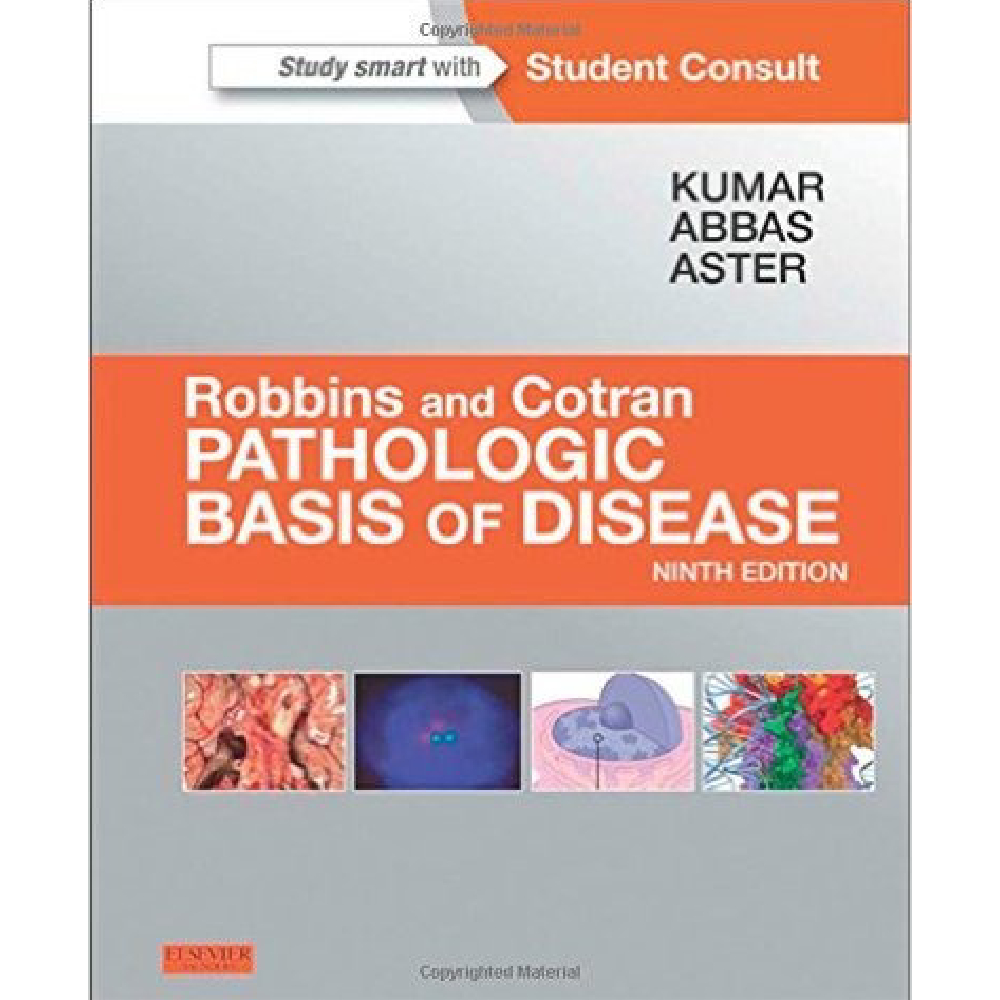Robbins & Cotran Pathologic Basis Of Disease 9th Edition By Vinay Kumar – Test Bank
Chapter 11: Blood Vessels
Test Bank
MULTIPLE CHOICE
1. Arterial hypertension of Cushing syndrome is associated with
a. elevation of serum renin
b. elevation of angiotensin in blood
c. potassium retention in the kidneys
d. reduced sodium excretion in urine
e. increased diuresis
ANS: D, Cushing syndrome is associated with steroid-mediated retention of sodium in the kidneys and consequent reduced sodium excretion in the urine. Renin and angiotensin are not involved, and their concentration in serum is not changed.
2. Antineutrophil cytoplasmic antibodies showing widespread cytoplasmic staining of neutrophils in an indirect immunofluorescence test (c-ANCA) are found in high titers in which disease?
a. Microscopic polyangiitis
b. Wegener granulomatosis
c. Churg-Strauss syndrome
d. Goodpasture syndrome
e. Kawasaki syndrome
ANS: B, Wegener granulomatosis is typically associated with high titers of c-ANCA. p-ANCA is found in microscopic polyangiitis or Churg-Strauss syndrome.
3. Which of the following is the most common form of vasculitis in the elderly?
a. Temporal (giant cell) arteritis
b. Takayasu arteritis
c. Kawasaki disease
d. Churg-Strauss syndrome
e. Henoch-Schönlein purpura
ANS: A, Temporal arteritis is a granulomatous arteritis affecting temporal arteries and other arteries of the head in persons over the age of 50 years. Approximately 10% of all persons older than 80 years of age have this disease.
4. “Pulseless disease” associated with giant cell granulomatous inflammation of the aorta and its major branches arising from the arch of the aorta are features of
a. temporal (giant cell) arteritis
b. Takayasu arteritis
c. Kawasaki disease
d. Churg-Strauss syndrome
e. Henoch-Schönlein purpura
ANS: B, Takayasu arteritis, a giant cell inflammation, involves the aorta and its major branches, causing narrowing of the arteries; hence, its nickname “pulseless disease.”
5. Which type of vasculitis is typically associated with bronchial asthma?
a. Temporal (giant cell) arteritis
b. Takayasu arteritis
c. Kawasaki disease
d. Churg-Strauss syndrome
e. Henoch-Schönlein purpura
ANS: D, Churg-Strauss syndrome includes changes similar to polyarteritis nodosa, microscopic polyangiitis, bronchial asthma, and eosinophilia. Most patients have p-ANCA antibodies.
6. Aneurysms caused by weakening or destruction of the arterial wall by bacteria are called
a. berry aneurysms
b. fusiform aneurysms
c. saccular aneurysms
d. mycotic aneurysms
e. cirsoid aneurysms
ANS: D, Mycotic aneurysms are a consequence of bacterial infection that weakens the wall of the artery.






Reviews
There are no reviews yet.